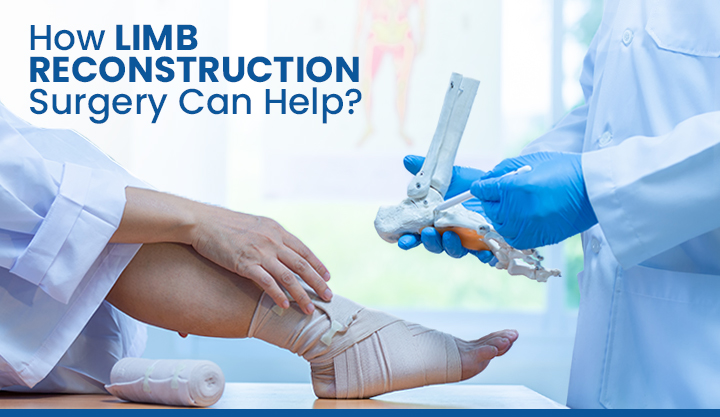
How Limb Reconstruction Surgery Can Help
Imagine daily life with impaired arms or legs where one cannot reach out for a hug, eat from a plate by oneself, leave a handwritten note on the fridge, take a stroll in the park, paint a picture, or run to the door when a loved one arrives – is almost impossible for most. Yet there are countless people for whom this is the reality owing to an impaired or zero use of their limbs due to birth defects, diseases, or accidents.
What is Limb Reconstruction Surgery?
Limb Reconstruction Surgery is part of Orthopedic Surgery that deals with limb musculoskeletal aspects. It attempts to correct deformities or traumatic injuries, like congenital deformities, bone infections, non-healing fractures, and limb length discrepancies, to name a few so that the limbs can function at their maximum possible capacity.
How Does Limb Reconstruction Surgery Help with Congenital Deformities?
Various unfortunate reasons can lead to the incomplete formation of a baby’s limbs within its mother’s uterus. The baby is then born with congenital deformities on its arms or legs. Muscle transplants, finger transplants, removal of extra tissue, removal of extra fingers, separation of fused fingers, bone grafts, and plastic surgery are some ways that the baby, a child in later years, or even an adult can benefit from Limb Reconstruction Surgery.
Limb Reconstruction In Cases of Bone Infections
Bone infections, or Osteomyelitis, usually occur at or around previous bone injury or surgery sites. When antibiotics do not help, surgery involving the removal of any abscesses or bones that have been rendered useless helps remove the infection as well as improve blood circulation in the area, thereby hastening the optimal use of the affected limb.
Limb Reconstruction Surgery Can Help Repair Non-healing Fractures
Sometimes, even after months, a fractured bone doesn’t heal completely. Such a fracture is called a non-union fracture, and most of them need surgery. Surgery in such cases usually involves:
- Removing infected tissue and bones, if any, to allow healthy tissue to grow back in its place.
- Introducing rods, screws, plates, or pins to hold the non-fractured bones together.
- Using bone grafts of healthy bone tissue from other parts of the body to help the healing and regenerative process.
Limb Length Discrepancies and Limb Reconstruction Surgery
Often, a person can have limbs of unequal length. This may have been a birth defect, or it could be the result of an injury or surgery. When treatments involving traction and stretching do not help, and usually if the difference in length between the limbs is more than 2 cm, a Limb Reconstruction Surgery is performed. The surgery usually involves cutting the bone and inserting screws, pins, and other external fixators into it so that they can be used to keep the bones apart at the cut while new bone tissue forms within it.
Limb Reconstruction Surgery, through its various applications, some of which have been outlined above, has been a life-changer for innumerable people. From making amputations unnecessary to saving lives, it has been and still is a major source of real hope for many.
